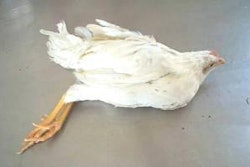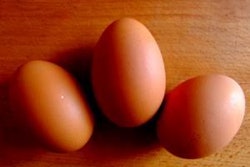
Between 1990 and 2007, European egg production increased, but the global market share of the region decreased dramatically. The finding is amongst trends identified by Professor Hans-Wilhelm Windhorst in his report for the International Egg Commission, Regional patterns of European Egg production and trade – with special reference to the EU.
Based on FAO data, global egg production over the period increased by 23.7 million tons, or by 67% to stand at 59 million tons. Over this period, a dramatic shift in production occurred at continental level. Asia became the absolute leader in production, followed by Europe and North America.
Europe lost almost half of its former share of global egg production, while North America lost some 10%. The contribution of the members of the European Union to global egg production peaked in 2000 and has declined ever since. This has been due, in part, to a recovery in the egg industries in the various Eastern European countries that are not part of the EU.
In 1990, Europe contributed 33.1% to global egg production but, by 2007, despite an increase in production – from 6.3 million tons to 6.4 million tons, Europe’s global market share decreased to only 16.7%.
Of this 16.7% contributed by Europe, approximately 11% was produced by countries within the EU. In 2007, the 27 EU Member States contributed 65% to overall European egg production, despite producing 169,000 tons less than in 2000.
Between 1992 and 2000, egg production in the EU increased by 510,000 tons, or by 8.4%. However, this situation has since reversed and, over the following seven years, production fell by 169,000 tons.
EU rankings
In 1992, the 10 leading countries contributed almost 90% to the total volume produced. This figure has since fallen and has stabilized at around 85%. The weakening of this regional concentration has come about as a result of declining production in some Central and Western European countries, and growth in the countries of Eastern Europe.
With the exception of the Czech Republic, which has fallen of the top ten list of European producers to be replaced by Hungary, all other countries have remained with the top ten list, despite movements in the rankings.
The expansion of egg production in Spain has been remarkable. Over the period in question, Spanish egg production increased by 12.8% or by 80,000 tons. The resulting surplus made Spain one of the major egg exporting countries in Europe.
Other countries have fared less well, however. In France, the leading EU egg producer, a drastic contraction occurred, -160,000 tons. This was the result of high costs and a number of farmers failing to adapt to regulations.
Germany’s volume production decreased by 13% over the period, although it still managed to hold on to the number two position.
The banning of cages in Germany as early as 2009 and the decision by many food retailers to not list eggs produced in the German version of enriched cages stopped investment and a considerable number of small- and medium-sized egg farmers decided to give up egg production or switch to floor management systems.
In the Netherlands, the industry continued to feel the effects of Avian influenza, while in the UK, many egg farms ceased production because of the decision by leading food retailers to no longer stock eggs from cage production.
Non-EU rankings
A comparison of the dynamics in non-EU countries shows that between 1992 and 2000, volumes decreased by 1.2 million tons, or 30%. Over the following seven years, however, output grew by 0.53 million tons, but is yet to reach the level recorded in 1992.
A closer look at the composition and ranking of the leading countries shows that with the exception of the leading three producers, Russia, Ukraine and Belarus, several changes occurred. Serbia and Montenegro no longer makes it into the rankings, while the outlook for outlook for Albania and Croatia would appear to be increasingly positive.
In 2007, the production of volume of Russia was still some 12% lower than in 1992, while in Belarus it was down by 22.5%. In Ukraine, however, the egg industry would appear to have recovered from the socio-economic adaption problems of the early 1990s.
The regional concentration of egg production in non-EU member countries is high. Some 91% of production volume is concentrated in the leading three countries, with Russia holding the dominant position.


















